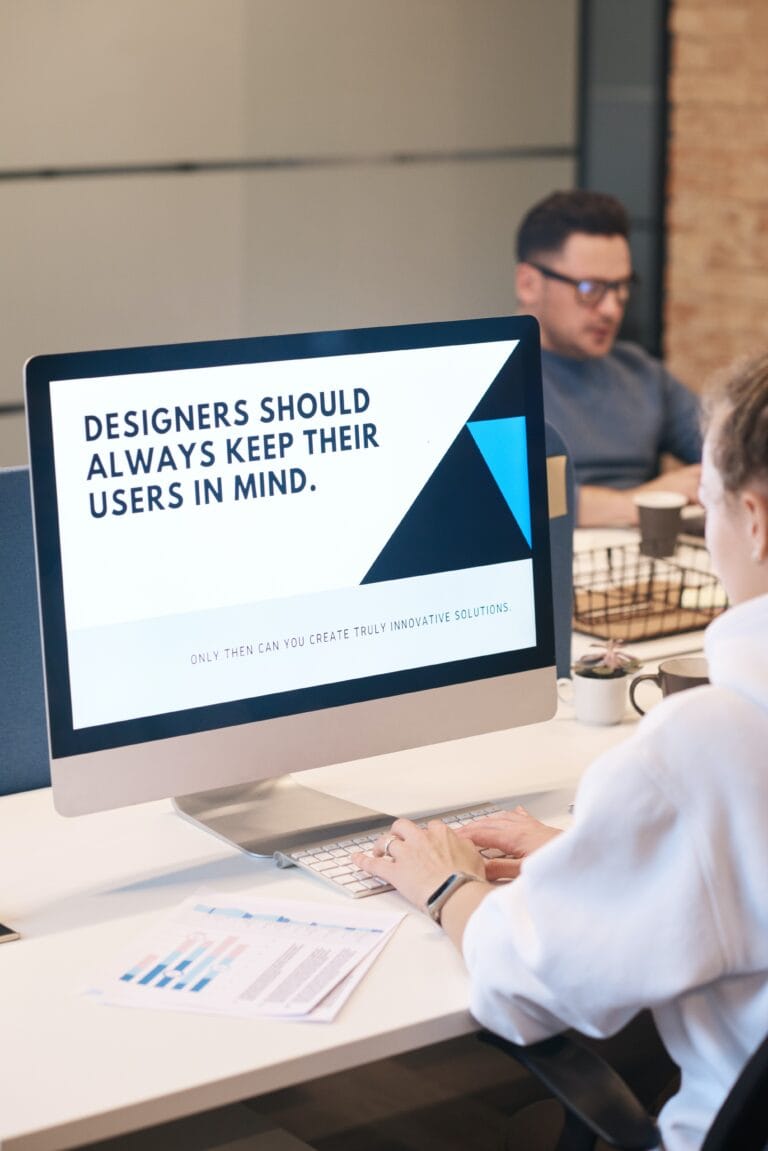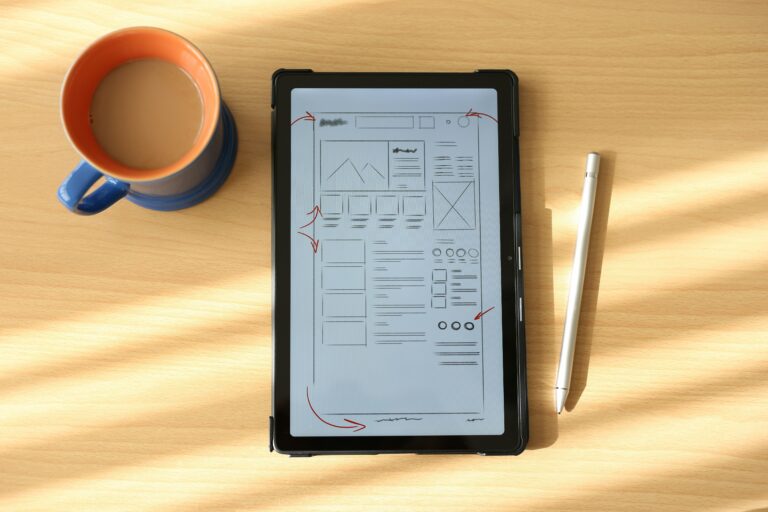User experience (UX) design is a crucial aspect of the digital world, ensuring that digital products, websites, and apps are intuitive and user-friendly. A UX Designer is an essential part of the development team that helps to create products that provide a seamless and enjoyable experience for users.
What is a UX Designer?
A UX Designer is responsible for designing digital products that are user-friendly and provide a great experience for the user. They focus on creating intuitive interfaces, accessible interactions, and visually appealing designs.
The goal of a UX Designer is to create products that meet the needs of the user and provide a positive experience. To achieve this, a successful person will use data and research to inform their design decisions, creating products that are not only aesthetically pleasing but also functional and useful.
When is the right time to hire a UX Designer?
In today’s digital world, almost every company that creates digital products needs a UX Designer. This includes companies that create websites, mobile apps, and software applications. Companies that are focused on e-Commerce, social media, and digital marketing also require this job to be done.
Some examples of companies that need UX Designers include:
- Technology companies: such as Apple, Google, and Microsoft
- E-commerce companies: such as Amazon, Shopify, and Etsy
- Social media companies: such as Facebook, Twitter, and Instagram
- Financial companies: such as banks, investment firms, and payment processors
- Healthcare companies: such as medical software and telemedicine companies
- Education companies: such as online learning platforms and educational software providers
Businesses should hire for this role as early as possible in the product development process. Ideally, this person should be involved in the process from the very beginning, before any code is written or design is created.
This is because the role of a UX Designer is to ensure that the product meets the needs of the user. By involving them early in the process, a company can ensure that they are creating a product that will be successful and meet the needs of their target audience.
In addition, a UX Designer can help to save time and money by identifying potential issues early in the process. This can help to prevent costly redesigns or changes later in the process.
What does a UX Designer do?
The daily tasks can vary depending on the company and the project they are working on. However, some common tasks include:
- Conducting user research: This involves gathering data and insights about the target audience to inform the design process.
- Creating wireframes and prototypes: This involves creating visual representations of the product to test and refine the design.
- Testing and iterating: This involves testing the product with users and making changes based on their feedback.
- Collaborating with other team members: This involves working closely with developers, product managers, and other designers to ensure that the product meets the needs of the user.
- Keeping up with industry trends: This involves staying up to date on the latest trends and best practices in UX design.
A UX Designer will typically split their time between these tasks, depending on the stage of the project and their individual responsibilities. For example, during the early stages of a project, the worker may spend more time conducting user research and creating wireframes and prototypes. As the project progresses, they may spend more time testing and iterating on the product based on user feedback.
In addition, this role requires time collaborating with other team members, attending meetings, and providing updates on the progress of the project.
What skills are needed as a UX Designer?
To be a successful, there are several key skills that are required. These include:
Design skills
The candidate must have a strong design sense and be able to create visually appealing and intuitive interfaces.
Research skills
The role requires a person who must be able to conduct user research and analyse data to inform design decisions.
Communication skills
A UX Designer must be able to communicate their ideas and design decisions effectively to other team members.
Collaboration skills
The role requires a candidate who must be able to work effectively with other team members, including developers and product managers.
Problem-solving skills
The person must be able to identify and solve problems in the design process.
Technical skills
A UX Designer must have a basic understanding of front-end web development, including HTML, CSS, and JavaScript.
In addition to these skills, they should also be passionate about creating great user experiences and have a strong understanding of human psychology and behaviour.
What are employers looking for in a UX Designer candidate?
When hiring for this role, employers are typically looking for candidates who have a combination of the skills listed above, as well as the following qualities:
- Creativity: should be able to come up with innovative and creative solutions to design problems.
- Attention to detail: should be detail-oriented and be able to ensure that every aspect of the design is perfect.
- Empathy: should be able to empathise with the user and create designs that meet their needs.
- Flexibility: should be able to adapt to changing requirements and be flexible in their approach to design.
- Continuous learning: should be constantly learning and staying up to date on the latest trends and best practices in UX design.
What tools do UX Designers use?
There are a number of tools that are used to create digital products. Some of the most common tools include:
- Sketch: A popular design tool that is used to create wireframes and prototypes.
- Adobe XD: A design tool that is used to create interfaces and prototypes.
- InVision: A prototyping tool that is used to create interactive mockups.
- Figma: A design tool that is used for collaborative design and prototyping.
- Axure: A prototyping tool that is used to create high-fidelity prototypes.
In addition to these tools, its common to use tools for user research, such as surveys and user testing software.
Why become a UX Designer?
There are several pros to working in this role including:
- The ability to create products that improve people’s lives: UX Designers have the opportunity to create products that make people’s lives easier and more enjoyable.
- A high demand for UX Designers: With the rise of technology, there is a high demand for skilled UX Designers.
- A collaborative work environment: UX Designers typically work closely with other team members, including developers and product managers, creating a collaborative work environment.
- The opportunity for continuous learning: The field of UX design is constantly evolving, providing UX Designers with the opportunity for continuous learning and professional development.
What are the challenges of the role?
There are also some cons to working as a UX Designer, including:
- The potential for frustration: UX Designers may experience frustration when trying to balance the needs of the user with the limitations of the technology and business requirements.
- High pressure and tight deadlines: The fast-paced nature of the technology industry can result in tight deadlines and high pressure to deliver results.
- Constant change and iteration: The iterative nature of UX design means that designs may need to be constantly changed and refined based on user feedback.
- Limited autonomy: UX Designers may not always have complete control over the design process, as they may need to work within the constraints of the technology and business requirements.
What experience do I need on my CV?
The stepping stones for a candidate to secure a UX Designer job involves a combination of education and experience. Here are the steps to take:
Earn a degree in a related field
Many UX Designers have a degree in graphic design, web design, or computer science. However, degrees in psychology, sociology, or anthropology can also be beneficial, as they provide a strong foundation in human behaviour.
Build a portfolio
A strong portfolio is essential for securing a UX Designer role. This should include examples of your design work, as well as information about your design process and the results of your work.
Gain experience
Gaining experience through internships, freelance work, or volunteer work can be beneficial for securing a UX Designer role.
Network
Networking is an important part of securing a UX Designer role. Attending industry events, participating in online forums, and connecting with other professionals in the field can help to build your network.
Develop your skills
Continuing to develop your skills through online courses, workshops, and other professional development opportunities can help you stay up to date on the latest trends and best practices in UX design.
What training and experience will help with gaining a UX Designer job?
To gain a UX Designer job, there are several types of training and experience that can be helpful:
- User research: Experience conducting user research can be beneficial for a UX Designer role. This includes skills such as creating surveys, conducting interviews, and analysing data.
- Wireframing and prototyping: Experience creating wireframes and prototypes using design tools such as Sketch, Adobe XD, or Figma can be helpful for a UX Designer role.
- Front-end web development: Basic knowledge of front-end web development, including HTML, CSS, and JavaScript, can be beneficial for a UX Designer role.
- Collaboration: Experience working collaboratively with other team members, including developers and product managers, can be helpful for a UX Designer role.
- Communication: Strong communication skills, including the ability to explain design decisions and collaborate with other team members, can be beneficial for a UX Designer role.
Read our guide to where and how you can learn UX design.
What other roles exist within User Experience?
In addition to the UX Designer role, there are several other roles within User Experience (UX) design. Each role has different responsibilities and requirements, and they work together to ensure that digital products provide a great experience for the user. Some of the other roles within UX design include:
UX Director: A UX Director is responsible for managing the overall UX design strategy of a company. They lead the UX team and ensure that the design work meets the company’s goals and objectives. They work closely with other departments, such as marketing and product development, to ensure that the design work aligns with the company’s overall strategy.
Head of UX: A Head of UX is responsible for overseeing the entire UX design process. They manage the UX team and ensure that the design work meets the company’s goals and objectives. They work closely with other departments, such as marketing and product development, to ensure that the design work aligns with the company’s overall strategy.
UX Lead: A UX Lead is responsible for leading the UX design process for a specific product or project. They work closely with other team members, such as developers and product managers, to ensure that the design work meets the project’s goals and objectives.
UX Manager: A UX Manager is responsible for managing the day-to-day operations of a UX team. They ensure that the team is working efficiently and effectively, and that the design work meets the company’s goals and objectives.
UX Researcher: A UX Researcher is responsible for conducting user research to inform the design process. They gather data about user behavior, preferences, and needs, and use that information to create designs that meet the needs of the user.
Each of these roles requires different skills and experiences, and they work together to ensure that digital products provide a great experience for the user. Whether you are interested in management, design, or research, there is a role within UX design that can fit your skills and interests.
Conclusion
A UX Designer plays a critical role in creating digital products that provide a great experience for the user. They are responsible for conducting user research, creating wireframes and prototypes, testing and iterating, and collaborating with other team members. A successful UX Designer will use data and research to inform their design decisions, creating products that are not only aesthetically pleasing but also functional and useful. To become a UX Designer, one must have a strong design sense, research skills, communication skills, collaboration skills, problem-solving skills, technical skills, and a passion for creating great user experiences.




